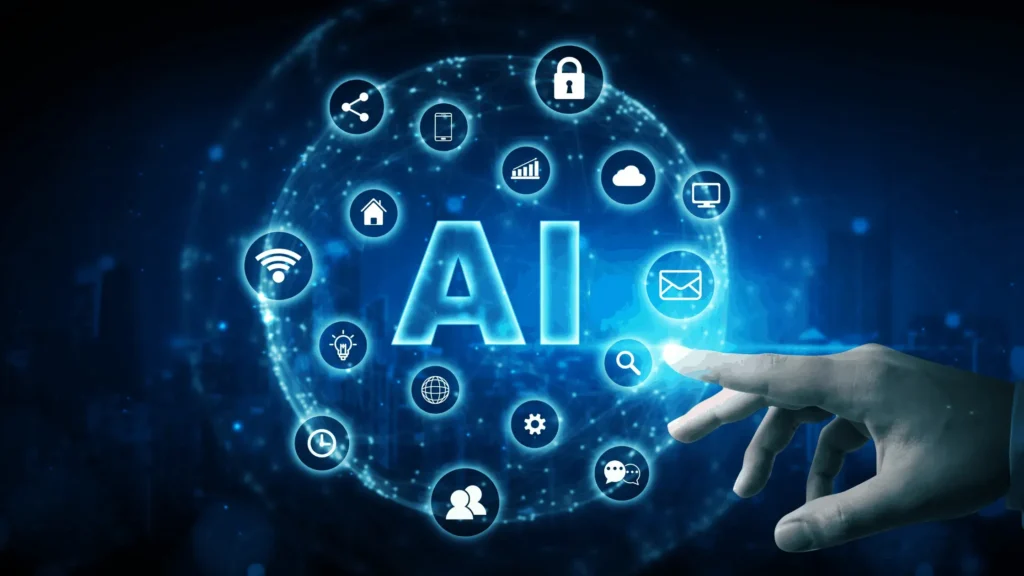In today’s rapidly changing digital landscape, the role of AI in application security is essential for protecting software applications. As cyber threats become increasingly sophisticated, traditional security methods are insufficient. Developers can use artificial intelligence to strengthen their applications’ defenses and proactively protect them against emerging security risks. AI-powered security tools are designed to detect, respond to, and neutralize threats in real time, making them an essential component for any modern software development process.
Why Do We Need AI in Application Security?
Rising Cybersecurity Threats
Cyberattacks are advancing, and traditional security methods can no longer keep up.
Hackers are using new, clever techniques to bypass the usual security measures.
AI helps fight back by spotting threats that might go unnoticed by older security systems.
Traditional Security Isn’t Enough
Conventional security methods depend on set rules and signatures to catch known threats.
These systems can’t quickly adapt to attacks, leaving apps vulnerable to newer, evolving threats.
AI can learn and adapt, helping recognize and react promptly to unfamiliar threats.
How AI Improves Security in Software Development
Real-Time Threat Detection
AI-powered systems monitor applications and networks in real-time, watching for unusual activity.
It looks for strange patterns like unauthorized logins or abnormal user behavior, which may indicate a security breach.
By catching these issues early, AI helps prevent attacks before they escalate.
Predicting Vulnerabilities Before They’re Exploited
AI tools can spot your application’s weaknesses before hackers can exploit them.
By analyzing past security incidents, AI learns to recognize future threats and helps developers fix vulnerabilities.
Automating Security Tasks
Many security tasks can be repetitive and time-consuming. AI can take care of these tasks automatically, saving developers and security teams time.
This includes things like vulnerability scanning, threat monitoring, and patch management.
AI Techniques for Application Security
Threat Detection and Prevention
AI systems constantly analyze network traffic and application behavior to detect suspicious activity.
It can identify known and unknown threats by looking for patterns and anomalies in data.
When a threat is detected, AI can quickly respond by isolating or neutralizing the attack.
Anomaly Detection
AI excels at spotting unusual behavior, such as a sudden spike in traffic or an unfamiliar login location.
By learning what “normal” behavior looks like, AI can easily flag anything that seems out of place, allowing security teams to act fast.
Behavioral Analysis
AI looks at how users interact with an application to detect suspicious activity.
The AI will alert the security team to investigate if a user accesses sensitive data without permission.
Automated Vulnerability Assessment
AI can automatically scan your application for vulnerabilities, identifying weak points before hackers can exploit them.
It performs regular assessments, reducing the chances of missing critical flaws that could lead to cyberattacks.
Machine Learning and Its Role in Security
Supervised Machine Learning
In supervised learning, AI systems are trained using known examples of safe and malicious activity.
This helps AI learn patterns that indicate potential security threats, allowing it to detect them more easily in the future.
Unsupervised Machine Learning
AI doesn’t need labeled data for unsupervised learning. It finds new patterns and irregularities in data on its own.
This makes AI better at spotting new and unseen threats, offering a more comprehensive security solution.
Predictive Analytics
AI uses past security data to predict potential future threats.
Analyzing historical attack data helps teams take preventive action, reducing the chances of successful attacks.
Challenges of Using AI in Application Security
Data Privacy Concerns
AI systems need access to a lot of data to work effectively, which raises privacy concerns.
AI systems must respect privacy laws and avoid misusing sensitive data, like customer information.
False Positives and Algorithm Bias
Sometimes, AI might mistake legitimate activity for a security threat, creating false alarms.
The effectiveness of AI depends on the data it’s trained on. The AI might miss specific attacks if the data is biased or incomplete.
Cost and Complexity
Implementing AI-based security solutions can be expensive, especially for smaller businesses.
Integrating AI into existing security systems can also be complex and time-consuming.
Examples of AI in Application Security
Google and Microsoft
Large tech companies like Google and Microsoft use AI-powered tools to keep their platforms secure.
For instance, Google uses AI-driven security systems like Chronicle Security to detect and respond to cyber threats in real-time.
AI in the Financial Sector
Banks such as HSBC and Barclays use AI to monitor transactions and prevent fraud.
AI helps by continuously analyzing transactions and flagging any suspicious activities.
AI in Healthcare
Healthcare organizations use AI to protect patient data and prevent cyberattacks on their systems.
AI analyzes patterns in healthcare databases, ensuring that any unusual activity gets flagged for review.
What’s Next for AI in Application Security?
Deep Learning Integration
Deep learning is expected to play a significant role in the future of AI security tools.
These advanced models can analyze large amounts of unstructured data, helping to detect even more complex threats.
AI-Powered Automation
In the future, more security tasks will be automated. Things like patching, vulnerability management, and threat analysis will become routine tasks that AI handles.
This enables security teams to concentrate on strategic areas while AI manages the basics.
AI and Quantum Computing
As quantum computing advances, AI will help secure applications against the new challenges quantum-enabled attacks will pose.
AI will be vital to ensuring that software applications remain safe from the advanced capabilities of quantum computers.
Best Practices for Using AI in Application Security
Choose the Right AI Tools
Select AI security tools that suit your needs and can integrate with your existing systems.
Ensure the tools can detect threats in real time and provide actionable insights.
Keep AI Models Updated
AI models need to be regularly updated to stay effective.
Ensure continuous training to keep up with new threats and evolving attack methods.
Comply with Data Regulations
Ensure that AI systems follow data privacy regulations like GDPR.
Proper data management practices are crucial for protecting sensitive information.
Cross-Team Collaboration
Collaboration between security, development, and AI teams is critical to successful AI implementation.
Working together ensures that security measures align with development practices for better protection.
Conclusion:
AI is transforming how we protect software applications. Using AI-driven tools, developers can stay one step ahead of cyber threats, proactively detecting and addressing potential risks before they become serious problems. From real-time threat detection to predictive analytics, AI is helping create more intelligent, adaptive security systems. As AI technology evolves, its role in software security will only grow, making it an essential tool for safeguarding applications in the digital age.
Visit our website, www.everitesolutions.com, to learn more about AI in Application Security. Contact us at info@everitesolutions.com or our mobile number, +1 404-835-1605, to schedule a consultation and discover how Everite can help shape your business’s future.








Permalink